Published May 16, 2024
The Baddest Part of Space: A Brief History of the Badlands
The last place in the galaxy you want to take your starship, is often the place with the most going on.
SPOILER WARNING: This article contains story details and plot points for Star Trek: Discovery Season 5's "Erigah" and "Labyrinths"!
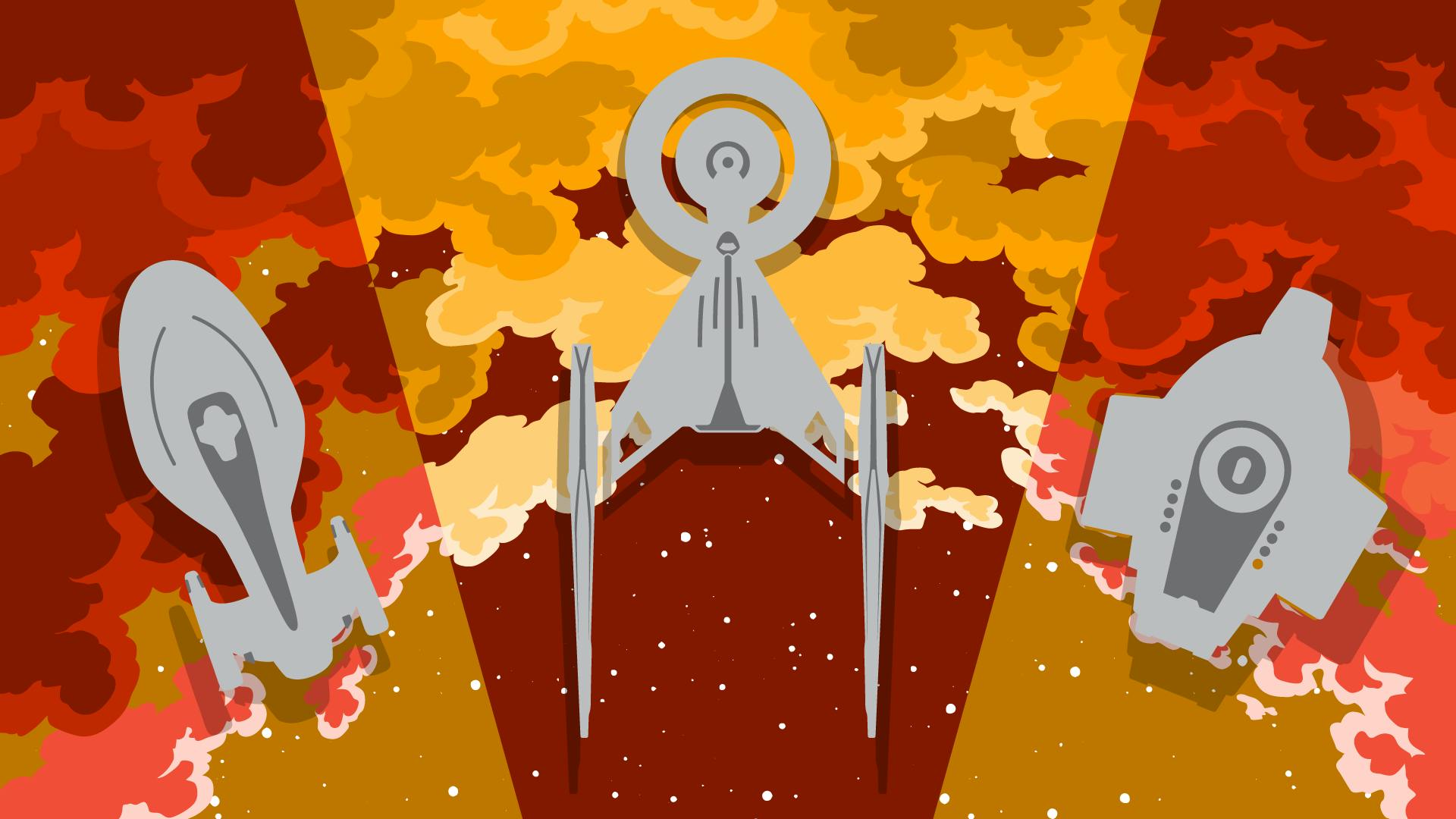
StarTrek.com
The stormiest part of the galaxy is also the place where everyone seems to end-up, at least, if you’re in a certain kind of Star Trek adventure.
In the seventh ("") and eighth ("Labyrinths") episodes of Season 5, the crew learns that the final clue to unlocking the Progenitor tech will lead to the Eternal Gallery and Archive, a kind of mobile library. These days, it's located in the center of the Badlands, an area of space beset with plasma storms, gravitational anomalies, and, on a few occasions, the accidental doorway to the other side of the galaxy.
Discovery's return to the Badlands might be the next-to-last stop on the treasure map to get the elusive secrets of the tech, but it's a thrilling moment for longtime Star Trek fans. The Badlands isn't just a random Easter egg. This is a part of space pivotal to the history of the 24th Century, a place which spans not just a chunk of the Alpha Quadrant, but the paths of two beloved Trek shows — and .
Here's your brief history of the Badlands, plus, what makes it so bad, and so cool.
Star Trek and the Art of Foreshadowing
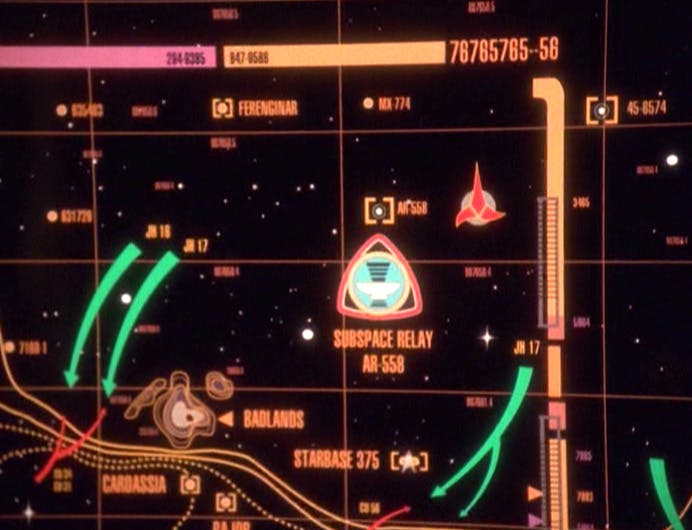
"When It Rains..."
StarTrek.com
In many ways, the Badlands represents a moment in Star Trek history where the franchise was getting really good at planting seeds for later plot developments, and, in the case of the Badlands, for TV series that had yet to even premiere. As many longtime fans know, back in the 1990s, having serialized arcs on any TV show was rare, meaning that ongoing shared continuity between and Deep Space Nine was downright revolutionary.
How does this connect to the Badlands? Well, before the U.S.S. Voyager actually went into the Badlands in the 1995 series premiere of Star Trek: Voyager, "," the concept of the Badlands was introduced in Deep Space Nine.
On April 24, 1994, in the 20th episode of Deep Space Nine's second season, the concept of the Badlands was quietly introduced. Titled "," the episode introduced the growing resistance movement among former Federation colonists living in a demilitarized zone that now was part of Cardassian space. This storyline was directly connected to The Next Generation episode "," which had aired just a month prior on March 28, 1994. That episode established the conundrum of what was happening to the Federation colonists in the Cardassian DMZ, and then, DS9's "The Maquis, Part I" and "," revealed what happened when those colonists organized into a fighting force.
By May 16, 1994, this storyline pivoted back to TNG with the episode "," in which Ro Laren defects to the Maquis, breaking Captain Picard's heart for nearly 30 years, until their reconciliation in the 2023 episode of , "."
So, in 1994, the Star Trek franchise escalated a huge storyline in March, April, and May. And one common element of this entire Maquis storyline was the Badlands.
The Badlands Revealed
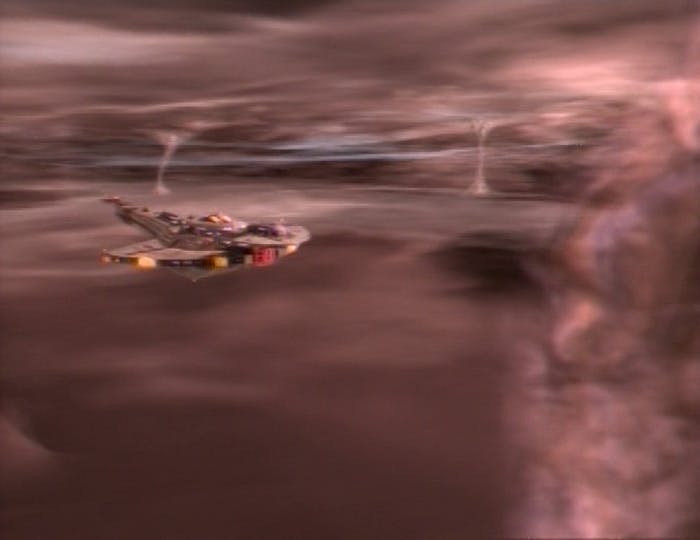
"Caretaker"
StarTrek.com
Although Deep Space Nine introduced the concept of the Badlands in Season 2, and later mentioned it again in the Season 3 episode "," the full destructive and absurdly dangerous aspect of the Badlands wasn't fully on display until the first episode of Star Trek: Voyager.
In "The Maquis, Part 1," Sisko says, "A few ships have been lost there over the past year or two," which again, foreshadows the moment when Voyager, and then Chakotay's ship the Val Jean, are transported to the Delta Quadrant, from the Badlands.
So while the Badlands had been visited and name-checked before Voyager, most fans associate this unstable region of space with that series. And with good reason, if Voyager had never pursued the Val Jean into the Badlands, the entire show would never have happened. Janeway even selected the temperamental, former-criminal Tom Paris as her pilot, because the Badland were known to be treacherous. And although DS9 would revisit the Badlands a bit more in subsequent seasons, the pink-orange landscape of the plasma storms from the opening moments of "Caretaker" have been burned into the brains of fans for almost 30 years.
Discovery's Return to the Badlands
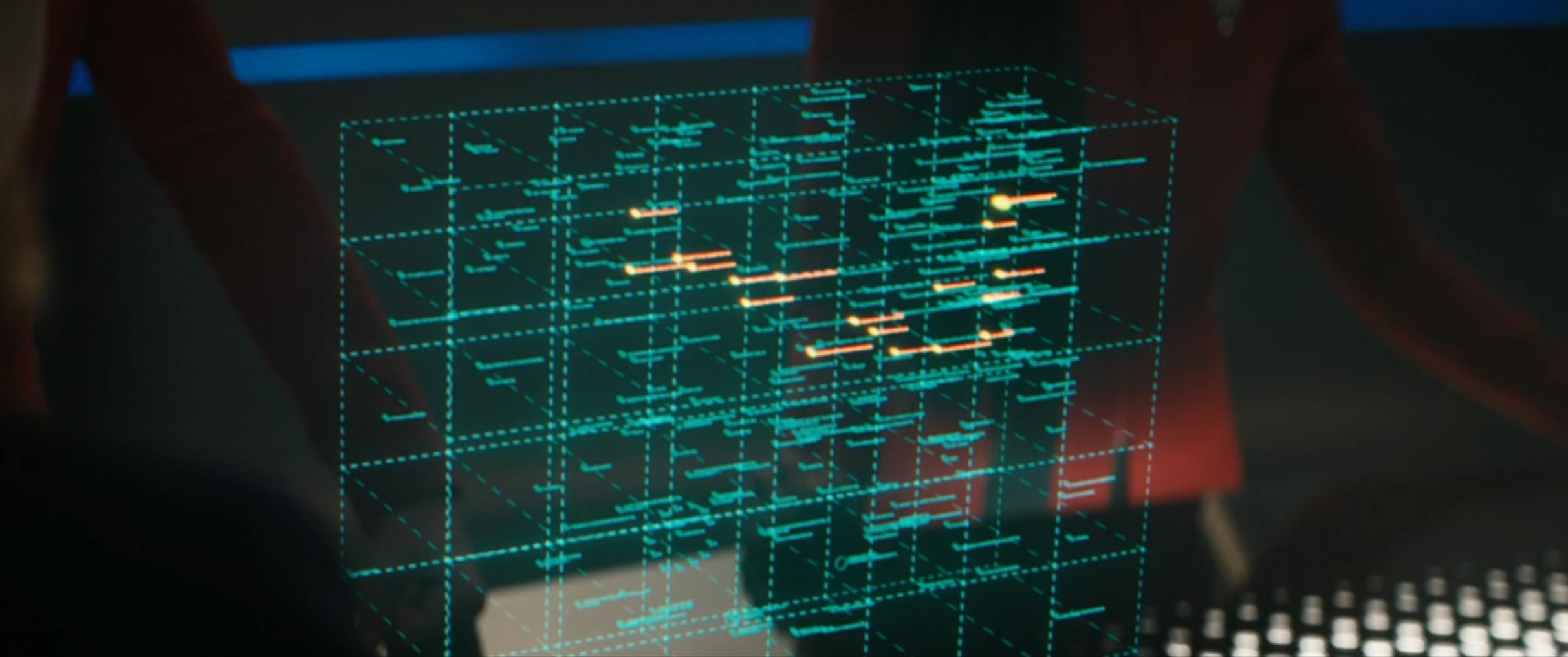
"Erigah"
StarTrek.com
As Rayner tells Captain Burnham in "Erigah," he’s been to the Badlands and "it's as fun as it sounds." In "Labyrinths," we learn what was a very unstable region in the year 2371, has expanded to become, as Rayner explains, "the largest plasma storm in the quadrant," in 3191.
When Discovery enters the Badlands, it appears to be one intricate, massive storm in space, even more intense than back in the Voyager days. "It's kinda beautiful, in a twisted sort of way," Tilly declares as the ship rolls up on the Badlands, and she's totally right.
While the Badlands has always been a scary place in the Trek universe, there's also something ethereal and magical about this specific spacescape. In DS9, it was a place of refuge for an idealistic band of rebels. In Voyager, the Badlands became a doorway to a larger adventure, changing the lives of Janeway and the rest of the crew in ways that had countless repercussions throughout all of Star Trek history. And now, in Discovery, the Badlands becomes a diaphanous, whimsical setting for a library in space.
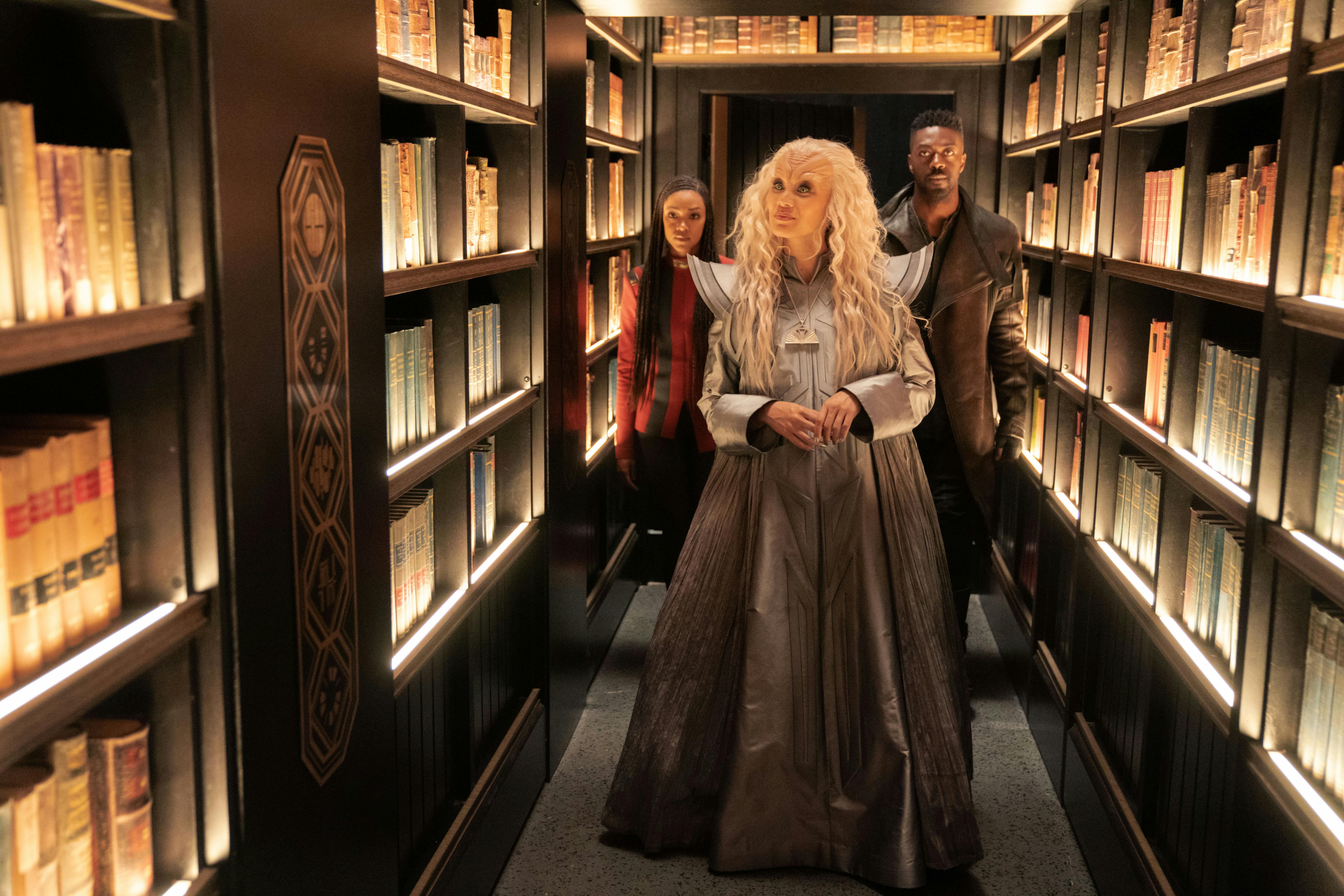
"Labyrinths"
StarTrek.com
One of Star Trek's recurring themes is the ways in which the pursuit of knowledge can help us all overcome hardship. And in Discovery, that theme is perfectly exemplified by a celestial library, at the center of an interstellar storm.





